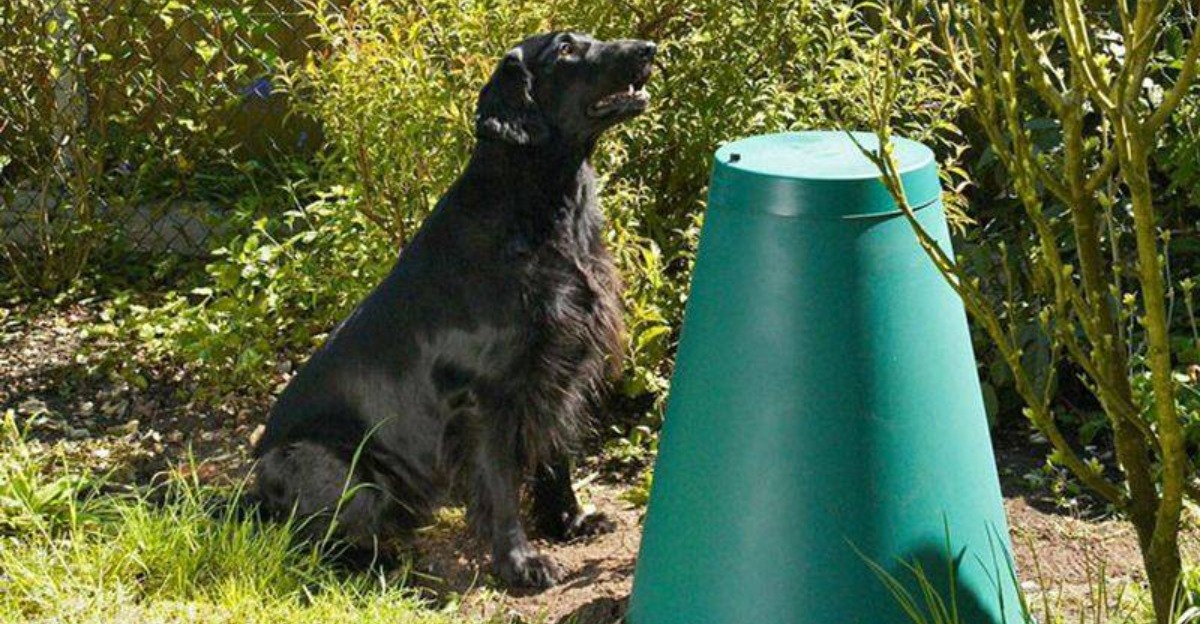
Feeding Guide for Adult Labradors: Balanced Diet & Portion Control
Feeding adult Labradors requires a balanced diet rich in proteins, healthy fats, and carbohydrates tailored to their size and activity level. Portion control is vital to prevent obesity, a common issue in this breed. Feeding twice daily, avoiding harmful human foods, and considering supplements for joint health can promote longevity and wellness. Regular monitoring and vet consultations ensure your Labrador remains healthy and energetic.
🐶 Pet Star
37 min read · 8, Jun 2025

Introduction
Labradors are one of the most popular and beloved dog breeds worldwide, known for their friendly nature, intelligence, and high energy levels. Proper nutrition plays a crucial role in maintaining their health, vitality, and longevity. Feeding adult Labradors a balanced diet with appropriate portion control is essential to support their active lifestyle, prevent obesity, and avoid health problems such as joint issues and diabetes.
This guide will help you understand the dietary needs of adult Labradors, recommend nutrient-rich food options, explain how to control portions, and provide tips for maintaining your Labrador’s ideal weight and overall wellness. Ensuring the long-term health, vitality, and optimal body condition of an adult Labrador Retriever hinges critically on providing a meticulously balanced diet coupled with rigorous portion control – a nuanced art that extends far beyond simply filling a bowl. Labradors, while renowned for their friendly disposition and intelligence, are equally infamous for their insatiable appetites and genetic predisposition to weight gain, making precise nutritional management not merely beneficial, but an absolute imperative to prevent obesity-related health issues that can dramatically shorten their lifespan and diminish their quality of life. An adult Labrador’s dietary needs are dynamic, influenced by their age, activity level, reproductive status, and overall health, necessitating a thoughtful approach to food selection and consistent monitoring of their physical condition. This comprehensive guide aims to illuminate the principles of a balanced diet for adult Labradors, delve into the nuances of portion control, discuss appropriate feeding schedules, address common dietary considerations, and underscore the critical role of regular veterinary oversight in maintaining their ideal weight and robust health.
The cornerstone of a healthy diet for an adult Labrador is a high-quality commercial dog food specifically formulated for large breeds or for adult maintenance. When selecting a food, look for brands that list a high-quality animal protein (e.g., chicken, beef, lamb, salmon) as the first ingredient, not a grain or a by-product. Protein is crucial for maintaining muscle mass, supporting organ function, and providing essential amino acids. The food should also contain a balanced blend of complex carbohydrates (e.g., brown rice, sweet potatoes, oats) for sustained energy, healthy fats (e.g., chicken fat, flaxseed, fish oil) for coat health, energy, and nutrient absorption, and a comprehensive array of vitamins and minerals. Avoid foods with excessive fillers, artificial colors, flavors, or preservatives. Some Labradors may thrive on grain-free diets, while others do perfectly fine with grains; the choice often depends on individual sensitivities and veterinary advice. For highly active or working Labradors, food with higher protein and fat content may be appropriate, whereas a less active or senior Labrador might benefit from a formula designed for weight management or lower calorie intake. Always opt for foods that meet the nutritional standards established by organizations like the Association of American Feed Control Officials (AAFCO), indicated by a statement on the packaging, ensuring the food is complete and balanced for the specific life stage.
Portion control is arguably the single most critical aspect of feeding an adult Labrador due to their propensity for overeating and subsequent weight gain. The feeding guidelines provided on dog food bags are merely starting points, typically calculated for average activity levels and often overestimate a dog's actual needs. These guidelines should be used as a reference, but a Labrador’s ideal weight and body condition score (BCS) should be the ultimate determinant of their daily intake. A healthy adult Labrador should have a tucked waist when viewed from above, and their ribs should be easily palpable under a thin layer of fat, similar to running your hand over the back of your knuckles. If the ribs are visible, they might be too thin; if you can't feel them without pressing, they are likely overweight. Daily food portions should be accurately measured using a standard measuring cup, not estimated by eye or bowl size. For most adult Labradors, two meals a day are recommended (e.g., morning and evening) rather than a single large meal, which can aid digestion and satiety. The total daily caloric intake should be divided equally between these two meals. Factors influencing daily caloric needs include:
Activity Level: A highly active Labrador engaged in daily long runs, retrieving, or working will require significantly more calories than a sedentary couch potato. Adjust portions upwards for increased activity and downwards for decreased activity.
Age: Younger adult Labradors (1-5 years) typically have higher metabolic rates than senior Labradors (7+ years) who often have reduced energy needs and may benefit from senior-specific formulas with fewer calories and joint-supporting supplements.
Spay/Neuter Status: Spayed or neutered Labradors often have slower metabolisms and require fewer calories to maintain weight compared to intact dogs. This is a common reason for post-surgery weight gain if food intake isn't adjusted.
Environmental Temperature: Dogs living in colder climates might need slightly more calories to maintain body heat, while those in warmer climates might need less.
Individual Metabolism: Just like humans, Labradors have individual metabolic rates. Some may gain weight easily on a given amount of food, while others remain lean. Regular monitoring and adjustment are key.
Treats should be factored into the daily caloric intake and offered sparingly. High-value training treats should be small and low-calorie. Avoid giving human table scraps, which can be high in fat, sugar, or sodium, and may contain ingredients toxic to dogs (e.g., onions, garlic, chocolate, grapes). If giving human foods as treats, opt for plain, cooked lean meats (chicken breast), plain vegetables (carrots, green beans, broccoli), or certain fruits (apples without seeds, blueberries) in very small quantities. Consider using a portion of their daily kibble as training rewards to avoid excess calories. Puzzle feeders and slow feeder bowls can also be excellent tools to manage portion control and extend meal times, which can help satisfy a Labrador's strong food drive and prevent rapid eating.
Water is as crucial as food. Adult Labradors require constant access to fresh, clean water. Their high activity levels and sometimes warm environments mean they can dehydrate quickly. Ensure multiple water bowls are available, both indoors and outdoors, and kept clean.
Common dietary considerations for Labradors include managing potential food sensitivities or allergies, which can manifest as skin issues (itching, redness), gastrointestinal upset (diarrhea, vomiting), or ear infections. If these symptoms occur, a veterinary consultation is essential, and a food elimination trial might be recommended. Obesity is a pervasive problem in the breed, leading to increased risk of joint problems (hip and elbow dysplasia, arthritis), diabetes, heart disease, respiratory issues, and reduced longevity. Regular weight checks at home and during vet visits are vital for early intervention. If a Labrador starts gaining weight, a gradual reduction in calories (e.g., 10-15%), increased exercise, and potentially switching to a weight management formula are necessary. Conversely, if a Labrador is underweight, increasing caloric intake and ruling out underlying medical conditions with a vet is important.
Finally, regular veterinary oversight is indispensable. Your veterinarian can help determine the ideal weight range for your specific Labrador, provide personalized dietary recommendations based on their health status and lifestyle, and address any emerging nutritional or health concerns. Annual check-ups offer an opportunity to monitor body condition score, discuss activity levels, and make necessary adjustments to their feeding regimen. This professional guidance ensures that your Labrador's diet remains perfectly balanced to support their health through all stages of their adult life.
Nutritional Needs of Adult Labradors
Adult Labradors typically range from 1 to 7 years old, depending on their life stage. At this point, their growth is complete, and their nutritional needs shift toward maintaining health, muscle mass, and energy levels.
Macronutrient Requirements
- Proteins: Essential for muscle maintenance and repair. Labradors require high-quality animal-based proteins such as chicken, beef, lamb, or fish. Adult Labradors generally need about 18-25% protein in their diet.
- Fats: Important for energy and skin health. Healthy fats like omega-3 and omega-6 fatty acids support coat condition and brain function. Fat content should be approximately 8-15%.
- Carbohydrates: Provide energy and fiber for digestion. Whole grains, vegetables, and legumes supply complex carbohydrates and fiber.
Vitamins and Minerals
Vitamins like A, D, E, and minerals such as calcium, phosphorus, and zinc support bone health, immunity, and overall well-being. A balanced diet or high-quality commercial dog food should contain these essential micronutrients.
Balanced Diet for Adult Labradors
Feeding your Labrador a balanced diet means providing the right mix of proteins, fats, carbohydrates, vitamins, and minerals. Here are options to consider:
Commercial Dog Food
- Dry Kibble: Convenient and formulated for balanced nutrition. Choose high-quality brands with named meat sources as the first ingredient.
- Wet/Canned Food: Moist and palatable, often higher in protein and fat. Can be mixed with dry food or served alone.
- Grain-Free Options: Suitable for Labradors with grain sensitivities but consult a vet before switching.
Homemade Diets
Many owners prefer homemade meals for more control over ingredients. A balanced homemade diet includes:
- Lean meats (chicken, turkey, beef, fish)
- Cooked vegetables (carrots, peas, sweet potatoes)
- Whole grains (brown rice, quinoa, oats)
- Healthy fats (fish oil, flaxseed oil)
- Supplements (if recommended by a vet)
Note: Homemade diets require careful planning to avoid nutrient deficiencies. Consult a veterinary nutritionist before starting.
Raw Food Diet
Some owners feed raw diets that include raw meat, bones, and vegetables. While popular, raw diets must be managed carefully to prevent bacterial contamination and ensure balanced nutrition.
Portion Control for Adult Labradors
Maintaining an ideal weight is key to your Labrador’s health. Labradors are prone to obesity, which can lead to joint problems, diabetes, and reduced lifespan. Portion control combined with regular exercise helps keep your dog fit.
How to Determine Portion Size
Portion size depends on:
- Age
- Weight
- Activity level
- Metabolism
General guideline: Adult Labradors weighing 55-80 pounds typically need about 2 to 3 cups of dry dog food per day, split into two meals. This can vary based on caloric density of the food.
Using Feeding Charts
Most commercial dog food packages include feeding charts based on weight and activity. Follow these charts as a starting point and adjust based on your dog’s condition.
Monitoring Weight and Adjusting Portions
Regularly weigh your dog and observe body condition:
- Ideal Weight: Ribs can be felt easily but not seen; waist visible from above.
- Underweight: Increase portion size and consult a vet.
- Overweight: Reduce portions and increase exercise.
Tips for Feeding Adult Labradors
- Feed Twice a Day: Splitting food into two meals helps regulate metabolism and digestion.
- Avoid Overfeeding Treats: Treats should not exceed 10% of daily calories. Opt for healthy, low-calorie snacks like carrot sticks or apple slices (without seeds).
- Provide Fresh Water: Ensure clean water is available at all times.
- Incorporate Exercise: Feeding must be paired with daily walks or play sessions to maintain a healthy weight.
- Avoid Human Junk Food: Chocolate, onions, grapes, and processed foods can be toxic.
- Regular Vet Checkups: Monitor your dog’s health and dietary needs with professional guidance.
Common Feeding Mistakes to Avoid
- Free Feeding: Leaving food out all day often leads to overeating.
- Ignoring Portion Guidelines: Feeding based on visual cues rather than measured amounts causes weight gain.
- Over-reliance on Treats: Excess treats add unnecessary calories.
- Switching Foods Abruptly: Sudden diet changes can cause digestive upset. Gradual transition is essential.
- Not Considering Activity Level: An inactive dog requires fewer calories.
Conclusion
Feeding adult Labradors a balanced diet with proper portion control is fundamental to their health, happiness, and longevity. Understanding their nutritional requirements and selecting quality food — whether commercial, homemade, or raw — allows you to provide the best care.
Regularly monitoring your Labrador’s weight, feeding measured portions, and combining nutrition with daily exercise will help maintain an ideal physique and reduce the risk of obesity-related health issues.
Your Labrador depends on you for their wellbeing, and with a thoughtful feeding routine, you can ensure they lead a vibrant, energetic life for many years to come .
Q&A Section
Q1: What is the ideal diet for an adult Labrador?
Ans: An ideal diet for an adult Labrador is balanced and includes high-quality proteins, healthy fats, carbohydrates, vitamins, and minerals to support their energy and overall health.
Q2: How much food should an adult Labrador eat daily?
Ans: Portion size depends on age, weight, activity level, and metabolism, but generally 2.5 to 3.5 cups of high-quality dry dog food per day, divided into two meals, is recommended.
Q3: Why is portion control important for Labradors?
Ans: Portion control helps prevent obesity, which Labradors are prone to, ensuring they maintain a healthy weight and avoid related health issues like joint problems and diabetes.
Q4: What types of proteins are best for Labradors?
Ans: Lean meats like chicken, turkey, beef, and fish are excellent protein sources. Protein supports muscle maintenance and overall energy.
Q5: Can Labradors eat human food as part of their diet?
Ans: Some human foods like carrots, apples (without seeds), and plain cooked rice can be given as treats, but avoid toxic foods like chocolate, onions, and grapes.
Q6: How important are fats in a Labrador’s diet?
Ans: Healthy fats provide energy and promote a shiny coat and healthy skin. Omega-3 and omega-6 fatty acids are particularly beneficial.
Q7: What role do carbohydrates play in their diet?
Ans: Carbohydrates supply energy and fiber, aiding digestion. Good sources include brown rice, sweet potatoes, and oats.
Q8: Should Labradors be given supplements?
Ans: Supplements like glucosamine and chondroitin can help joint health, but consult a vet before adding any supplements.
Q9: How often should Labradors be fed in a day?
Ans: Adult Labradors should be fed twice daily to help regulate metabolism and prevent overeating.
Q10: How can I monitor if my Labrador’s diet is working well?
Ans: Monitor weight, energy levels, coat condition, and stool quality. Regular vet check-ups help ensure dietary needs are met.
Similar Articles
Find more relatable content in similar Articles

Pets and Mental Health: The Science Behind Emotional H..
Discover the profound impact o.. Read More

Social Media for Pets: Turning Your Pet into a Digital..
From playful puppies to charis.. Read More

Virtual Vet Visits: Are Online Consultations Reliable?..
As pet healthcare embraces dig.. Read More

Composting Pet Waste: A Greener Way to Clean Up...
As pet ownership continues to .. Read More
Explore Other Categories
© 2024 Copyrights by rPets. All Rights Reserved.